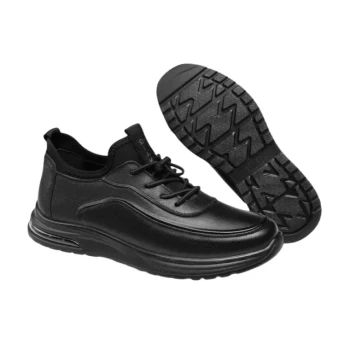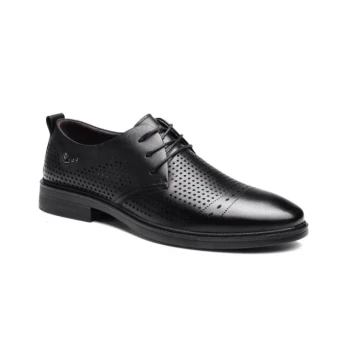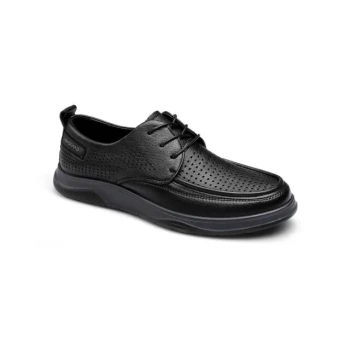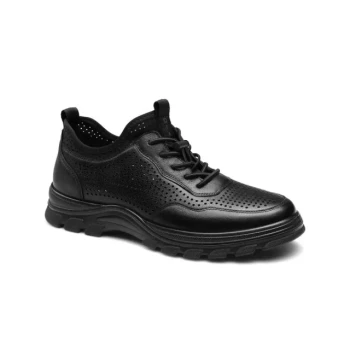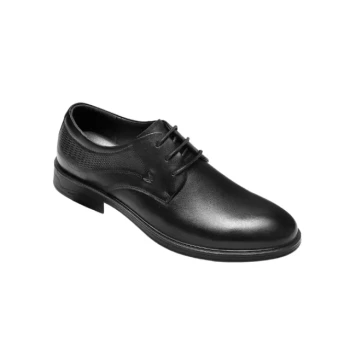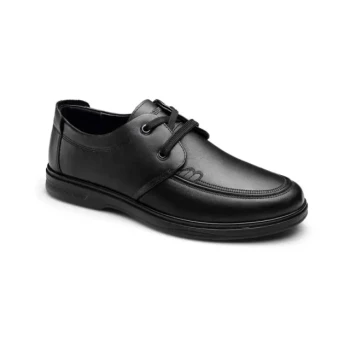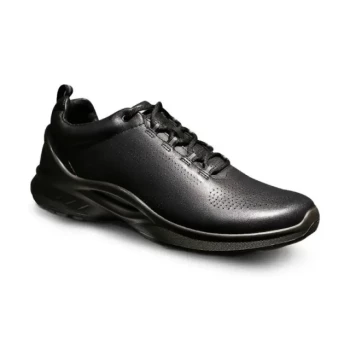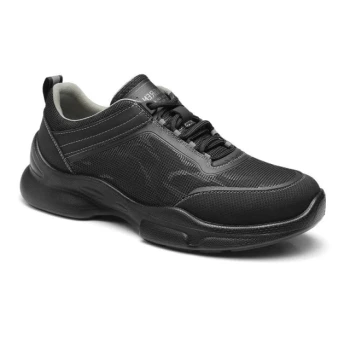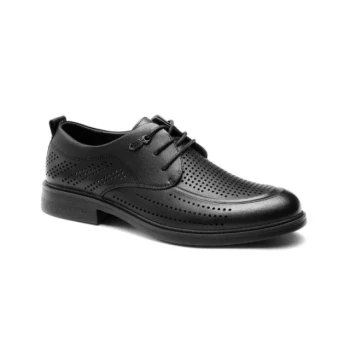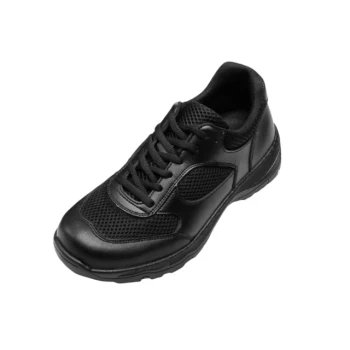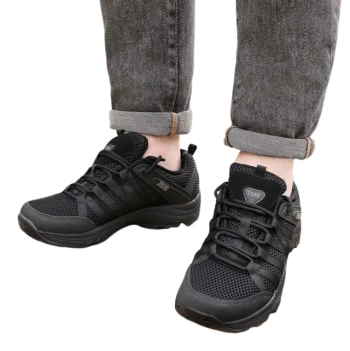In short, nubuck is a type of top-grain leather that has been sanded on the outer surface to create a soft, velvety texture similar to suede. While it originates from the same premium part of the hide as full-grain leather, this sanding process gives it a distinct feel, appearance, and set of characteristics. Nubuck is softer and more pliable from the start, whereas full-grain leather retains the hide's original, smooth, and highly durable surface.
The core difference lies in the finishing process: full-grain leather is the hide in its most natural state, prized for its untouched grain and durability, while nubuck is sanded to achieve a luxurious softness, sacrificing some of that raw resilience in the process.
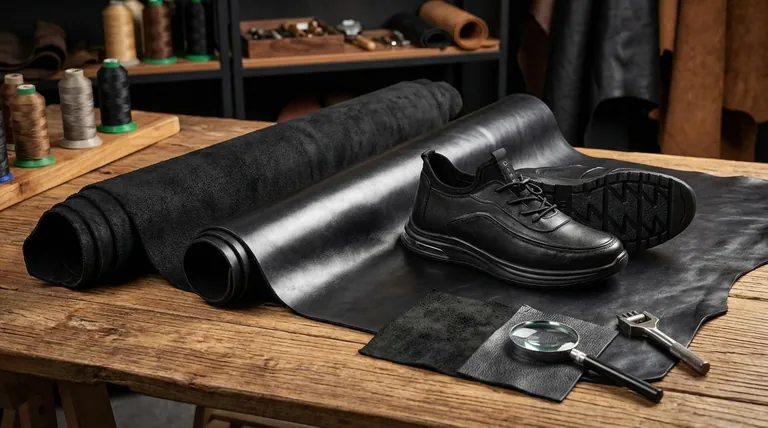
The Journey from Hide to Leather
To understand the difference between nubuck and full-grain, it helps to know how they are made. Both come from the strongest, outermost layer of the animal hide, known as the top grain.
Full-Grain: The Unaltered Original
Full-grain leather is the "top-shelf" material. It uses the entire top layer of the hide without any sanding or buffing to remove imperfections.
The natural grain, with all its unique marks and pores, remains completely intact. This makes it the thickest, strongest, and most durable type of leather.
Top-Grain: The Refined Layer
Top-grain leather is also from the top layer of the hide, but its surface is lightly sanded to remove blemishes, scars, or imperfections.
This creates a more uniform and consistent appearance. Nubuck is a specific type of top-grain leather.
Nubuck: The Velvety Finish
Nubuck begins its life as top-grain leather. The critical difference is that the outer side of the hide is then buffed or sanded.
This process raises the short protein fibers, creating the signature soft, velvety nap that nubuck is known for. It feels luxurious to the touch and has a suede-like feel but is significantly more durable than suede.
Understanding the Trade-offs: Nubuck vs. Full-Grain
Choosing between these two materials means balancing durability against comfort and aesthetics. Neither is universally "better"; they simply serve different purposes.
Advantage: Durability and Patina
Full-grain leather is the undisputed champion of durability. Its dense, untouched grain makes it highly resistant to moisture and wear.
Over time, full-grain leather develops a rich patina—a unique sheen and darkening that comes from use and exposure to the elements. This aging process is highly valued by enthusiasts.
Advantage: Immediate Comfort and Softness
Nubuck's primary advantage is its out-of-the-box comfort. The sanding process makes it much more pliable and flexible than stiff, new full-grain leather.
While some break-in period may still be needed, it's significantly shorter. The soft, velvety texture also provides a distinct, luxurious aesthetic that a smooth leather cannot.
Disadvantage: Break-in Period
The main drawback of full-grain leather is its initial stiffness. Footwear made from it can require a considerable break-in period to become comfortable.
Disadvantage: Maintenance and Stains
The sanded surface of nubuck makes it more porous and susceptible to stains from water and oil. It requires more careful maintenance and cleaning to preserve its appearance.
Making the Right Choice for Your Goal
Your final decision should be guided by what you value most in a leather product.
- If your primary focus is maximum durability and a product that ages beautifully: Choose full-grain leather for its resilience and ability to develop a unique patina.
- If your primary focus is immediate comfort and a soft, luxurious feel: Choose nubuck, especially for footwear you want to be comfortable from the very first wear.
Ultimately, both are premium materials that, with proper care, offer excellent performance and style.
Summary Table:
| Feature | Nubuck Leather | Full-Grain Leather |
|---|---|---|
| Texture | Soft, velvety nap (sanded surface) | Smooth, natural grain (untouched surface) |
| Durability | Good, but less resistant to stains/moisture | Excellent, highly resistant to wear |
| Comfort | Plush and flexible from the start | Stiff initially, requires break-in |
| Maintenance | Requires careful cleaning to avoid stains | Easier to maintain, develops a patina over time |
| Best For | Luxurious feel, immediate comfort | Long-term durability, classic aging |
Need Premium Leather Footwear for Your Business?
As a large-scale manufacturer, 3515 produces a comprehensive range of footwear using both nubuck and full-grain leathers. Whether you're a distributor, brand owner, or bulk client, we offer:
- Expert material selection to match your product goals (durability vs. comfort)
- High-volume production of all types of shoes and boots
- Custom solutions tailored to your market needs
Let’s create footwear that stands out. Contact us today to discuss your manufacturing requirements!
Visual Guide
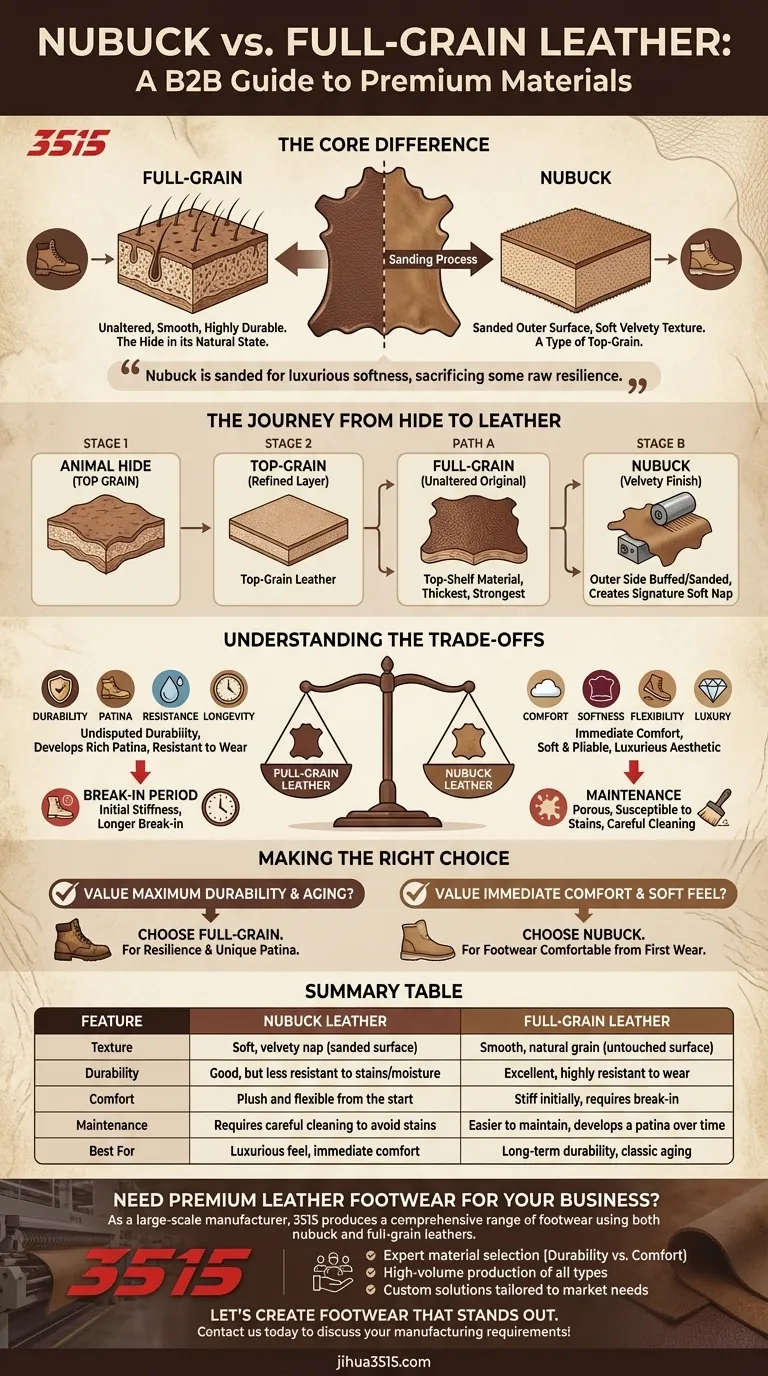
Related Products
- Custom Manufactured Air Cushion Leather Business Shoes for Wholesale
- Wholesale Comfort Leather Business Shoes with Dial Lacing System
- Factory Direct Wholesale Leather Comfort Shoes with Dial Closure
- Wholesale Leather Business Casual Shoes with Dial Closure - Manufacturer of Comfort Dress Sneakers
- Wholesale Leather Derby Shoes Manufacturer | Customizable Business & Dress Footwear
People Also Ask
- What are the characteristics of business casual sneakers? Master the Polished & Professional Look
- Can trainers/sneakers be worn in a business casual setting? How to Choose the Right Style for a Professional Look
- Are sneakers acceptable in a business casual workplace? How to Choose the Right Style
- Can sneakers be part of a business casual wardrobe? Yes, with the right style and fit
- What should be considered when choosing sneakers for a business casual office look? Achieve Comfort & Professionalism
